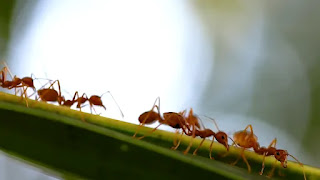Exploring Animal Behavior: A Fascinating Look into the Natural World
Animal behavior is a rich and diverse field of study that offers insights into the complexities of the natural world. From the intricate mating rituals of birds to the coordinated hunting strategies of wolves, animals exhibit a wide range of behaviors that are shaped by their evolutionary history and interactions with their environment. By studying these behaviors, scientists can gain a deeper understanding of how animals adapt to their surroundings, communicate with each other, and ensure their survival. In this blog post, we will explore some of the most fascinating examples of animal behavior, highlighting the diversity and complexity of life on Earth. Join us as we delve into the world of animal behavior and discover the remarkable ways in which animals navigate their world.
Courtship Dance of the Peacock
 |
One fascinating example of animal behavior is the courtship dance of the peacock. Male peacocks display their vibrant and iridescent plumage, fanning out their elaborate tails in a mesmerizing display to attract females. This behavior not only showcases the male's genetic fitness but also serves as a visual spectacle that can be seen from afar, ensuring maximum visibility to potential mates.
Migration of the Monarch Butterfly
Another intriguing example is the migration of the monarch butterfly. Each year, millions of monarch butterflies undertake a remarkable journey spanning thousands of miles from North America to Mexico. This behavior is driven by a combination of environmental cues, genetic programming, and the need to find suitable breeding grounds and food sources.
Social Behaviors of Dolphins
In the ocean, dolphins exhibit complex social behaviors, forming tight-knit groups known as pods. These pods work together to hunt for food, protect each other from predators, and even engage in play and communication through a series of clicks, whistles, and body language.
Sophisticated Colony Structures of Ants
Even insects display remarkable behaviors. Ants, for example, are known for their sophisticated colony structures and division of labor. Each ant has a specific role within the colony, from foraging for food to caring for the young and defending the nest. This coordinated effort ensures the survival and success of the entire colony.
Communication in Honeybees
Honeybees communicate with each other through a complex system of dances known as the waggle dance. This dance conveys information about the location of food sources, including distance and direction, allowing other bees to efficiently locate and collect nectar and pollen.
Tool Use in Animals
Some animals, such as chimpanzees and dolphins, have been observed using tools to aid in their survival. Chimpanzees use sticks to extract termites from their mounds, while dolphins use sponges to protect their snouts while foraging on the seafloor. This behavior demonstrates a level of intelligence and problem-solving ability that was once thought to be unique to humans.
In conclusion, animal behavior is a diverse and endlessly fascinating field of study that offers insights into the natural world and the complex interactions between organisms and their environments. By observing and understanding these behaviors, we gain a greater appreciation for the beauty and complexity of the animal kingdom.






Comments
Post a Comment